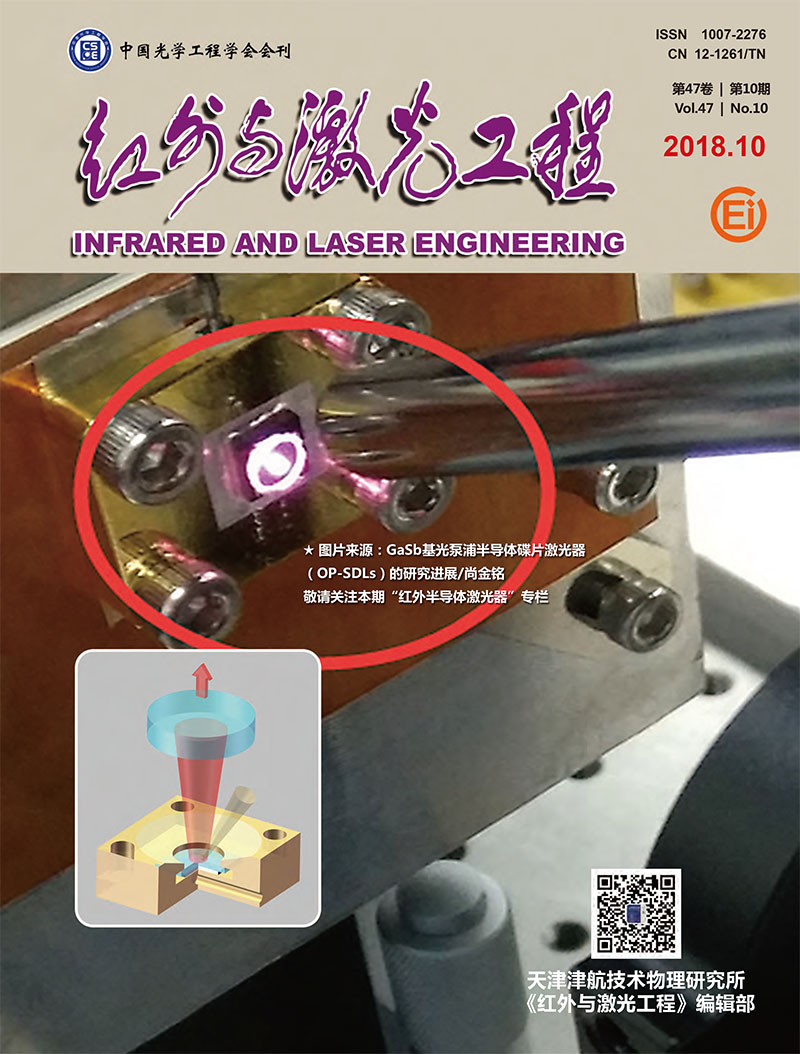Lu Chunqing, Song Yuzhi, Wu Yanpeng, Yang Mengfei. 3D information acquisition and error analysis based on TOF computational imaging[J]. Infrared and Laser Engineering, 2018, 47(10): 1041004-1041004(7). doi: 10.3788/IRLA201847.1041004
| Citation:
|
Lu Chunqing, Song Yuzhi, Wu Yanpeng, Yang Mengfei. 3D information acquisition and error analysis based on TOF computational imaging[J]. Infrared and Laser Engineering, 2018, 47(10): 1041004-1041004(7). doi: 10.3788/IRLA201847.1041004
|
3D information acquisition and error analysis based on TOF computational imaging
- Received Date: 2018-05-10
- Rev Recd Date:
2018-06-18
- Publish Date:
2018-10-25
-
Abstract
Time of flight (TOF) three-dimensional imaging technology has the advantages of active parallel detection in the frame, good real-time acquisition of scene information, small influence of ambient light, high accuracy of detection data, strong anti-sport interference and low average power consumption. In three-dimensional intelligent sensing, industrial inspection, SLAM and other fields have a wide range of applications, especially in autonomous navigation, driving control and intelligent systems as a real-time three-dimensional imaging information of the sensor has been rapidly developed. The principle and characteristics of two kinds of TOF imaging were studied. Two types of TOF imaging principle and characteristics, system composition were discussed. TOF imaging system was compared with other mainstream three-dimensional imaging technology. Its main source of error and type was classified and analyzed, its error model was studied. As a new generation of three-dimensional imaging technology, TOF is still in the development stage, which can effectively enhance the imaging perception and measurement level of the intelligent system and promote the technological progress in related fields.
-
References
|
[1]
|
Zanuttigh P, Marin G, Dal Mutto C, et al. Time-of-flight and Structured Light Depth Cameras[M]. Heidelberg:Springer, 2016. |
|
[2]
|
Wasenmller O, Ansari M D, Stricker D. DNA-SLAM:dense noise aware SLAM for TOF RGB-D cameras[C]//Asian Conference on Computer Vision, 2016:613-629. |
|
[3]
|
Hewitt R A, Marshall J A. Towards intensity-augmented SLAM with LiDAR and TOF sensors[C]//International Conference on Intelligent Robots and Systems, 2015:1956-1961. |
|
[4]
|
Gupta M, Agrawal A, Veeraraghavan A, et al. A practical approach to 3D scanning in the presence of interreflections, subsurface scattering and defocus[J]. International Journal of Computer Vision, 2013, 102(1-3):33-55. |
|
[5]
|
Kim W, Yibing W, Ovsiannikov I, et al. A 1.5 Mpixel RGBZ CMOS image sensor for simultaneous color and range image capture[C]//Solid-State Circuits Conference Digest of Technical Papers (ISSCC), 2012 IEEE International, 2012:392-394. |
|
[6]
|
Payne A, Daniel A, Mehta A, et al. 7.6 a 512424 CMOS 3D time-of-flight image sensor with multi-frequency photo-demodulation up to 130 MHz and 2GS/s ADC[C]//Solid-State Circuits Conference Digest of Technical Papers (ISSCC), 2014 IEEE International, 2014:134-135. |
|
[7]
|
TI ToF sensor. Time-of-flight (TOF) sensors[EB/OL].[2016-04-15]. https://www.ti.com/sensing-products/optical-sensors/3d-time-of-flight/overview.html. |
|
[8]
|
Payne A D, Dorrington A A, Cree M J. Illumination waveform optimization for time-of-flight range imaging cameras[C]//Videometrics, Range Imaging, and Applications XI. International Society for Optics and Photonics, 2011, 8085:80850D. |
|
[9]
|
Stephan M, Rahul N, Daniel K. Simulation of time-of-flight sensors using global illumination[C]//Vision, Modeling Visualization, 2013:33-40. |
|
[10]
|
Mutny M, Nair R, Gottfried J M. Learning the correction for multi-path deviations in time-of-flight cameras[J]. Computer Science, 2015, 1512:04077. |
-
-
Proportional views

-









 DownLoad:
DownLoad: